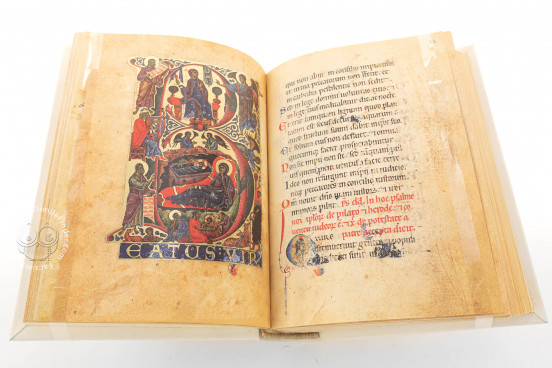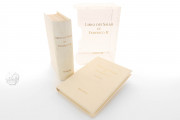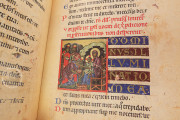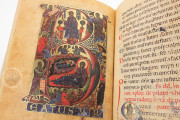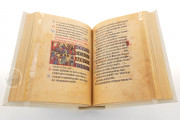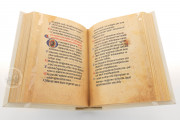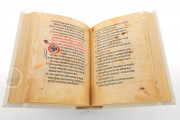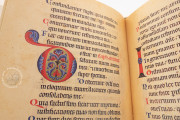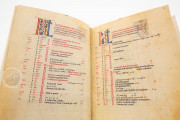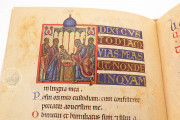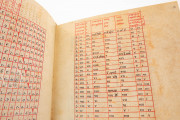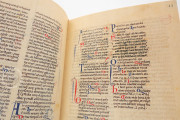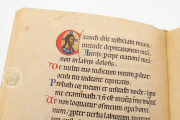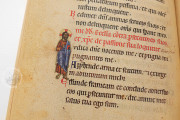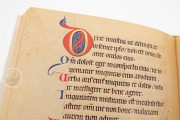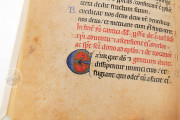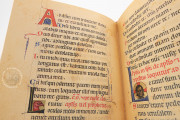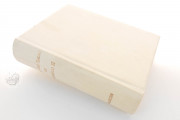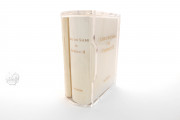The Riccardiana Psalter, also known as the Psalter of Frederick II, is a manuscript without parallel, which makes it difficult to solve the mysteries brought about by its synthesis of Byzantine and eclectic western elements. It can be dated to the second quarter of the thirteenth century and is thought to have been made in southern Italy or the Holy Land (ancient Palestine). It owes one of its nicknames to Frederick II (1194-1250), Holy Roman Emperor and King of Jerusalem and Sicily, who may or may not have commissioned the book for one of his wives. It boasts a glorious incipit page featuring a nearly full-page historiated initial and seven miniatures, as well as dozens of small painted initials.
The psalter's figural scenes are clustered at the marking of the Christian eight-fold liturgical division of the biblical book of Psalms. They comprise a life of Christ cycle extending from the Annunciation to the Virgin (paired with the Nativity in the historiated B that opens Psalm 1; fol. 14v) to Pentecost (at Vulgate Psalm 109; fol. 121v).
New Testament Images in a Book of Psalms
The distribution of New Testament scenes through the text of the psalms is a feature best known in German psalters of the period, such as the Landgrave Psalter. The scenes from the life of Christ of the Riccardiana Psalter feature backgrounds of burnished gold, and each of the seven miniatures introduces four to five lines of text in majestic gold capitals on blue, green, and red backgrounds.
Iconography Learned from Byzantine Art
The paintings of the Riccardiana Psalter include many details associated with the representation of the scenes in Byzantine art. Among these are the setting of the Nativity in a cave and the depiction of Christ reclining at the Last Supper (fol. 75r). Nevertheless, the closest comparisons for the style of the paintings are to be found in contemporary Sicilian art.
A Keen Interest in the Holy Land
Despite being made after Jerusalem fell out of the control of Western Europeans in 1187, the manuscript directly alludes to monuments in the city in both text and image. Striking is the shape of the altar canopy in the scene of the Presentation in the Temple (fol. 49v), which appears to refer to the Dome of the Rock, understood by Western Europeans at the time as either the ancient Jewish Temple or a building meant to commemorate the Temple. The presentation of the Last Supper and the Washing of the Feet in two registers was probably intended to evoke the two-story Christian chapel at the supposed site of the Last Supper in Jerusalem.
Made for a Nun?
Some of the prayers in the manuscript—perhaps additions to the original plan for the book's text—suggest that the book was intended to be used in a monastic setting, and Saints Benedict—founder of the Benedictine order—and his sister Scholastica are included in both the manuscript's calendar and the litany. An inscription indicates that one "Suor Margharita dasschorno," a Dominican nun of the convent of San Silvestro in Pisa, owned the book in the fifteenth century (fol. 175v). Around that time, vernacular prayers were added to the manuscript. The manuscript entered the Riccardiana from the library of Gabriello Riccardi (1705-1798).
We have 1 facsimile edition of the manuscript "Riccardiana Psalter": Libro dei Salmi di Federico II facsimile edition, published by Vallecchi, 2006
Request Info / Price
